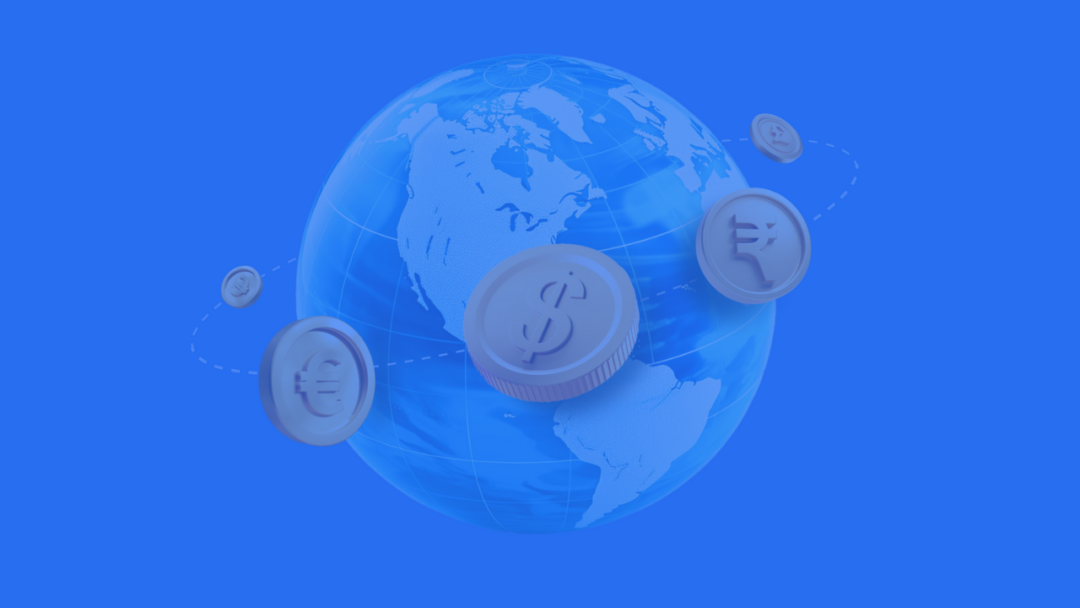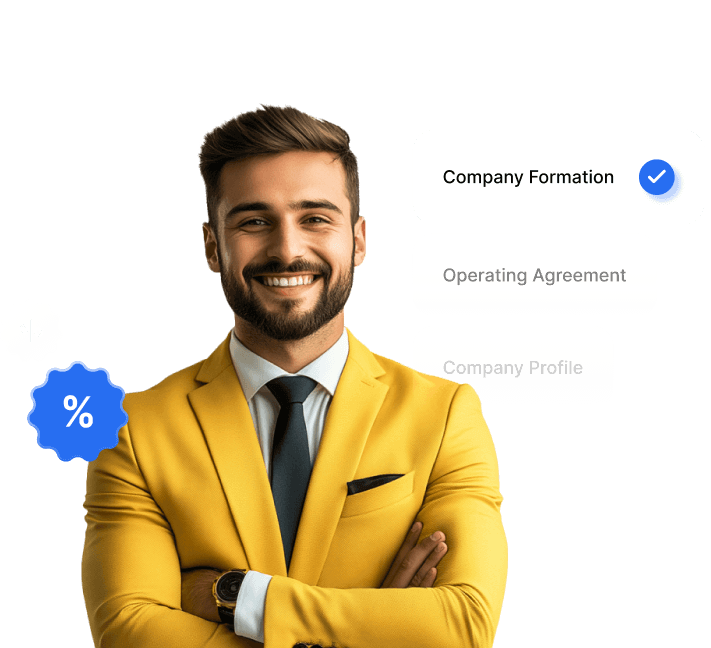Language:
SaaS vs. E-commerce: Which Business Model Hits $1M in Profit Faster?

For ambitious entrepreneurs, choosing between SaaS vs. e-commerce is a defining decision on the path to success. Both models hold immense potential, but when it comes to reaching the coveted $1M profit milestone, which one has the business edge?
SaaS offers scalable, recurring revenue, while e-commerce delivers fast sales—but which model hits $1M in profit faster?
If you’re ready to tap into this thriving market, signing up for doola’s Bookkeeping services might just be your smartest move. Whether you’re managing recurring revenue from subscriptions or tracking inventory and sales, our all-in-one solution keeps your finances organized and investor-ready.
So no matter your business model, accurate books are non-negotiable, and with doola, you’ll always stay on top of your numbers.
In today’s blog we will explore SaaS vs e-commerce, their potential and which one is your best bet.
Book a free demo and let doola simplify the SaaS vs e-commerce choice for you and help you scale to $1M in profit.
SaaS vs. E-commerce: Understanding the Key Differences
Before diving into the profitability aspects of SaaS vs e-commerce, let’s break down the fundamentals of each business model.
| Feature | SaaS Business | E-commerce Business |
|---|---|---|
| Revenue Model | Subscription-based recurring revenue | One-time product sales or subscriptions |
| Startup Costs | High development and technical investment | Moderate product sourcing costs |
| Scalability | High, once infrastructure is built | Moderate to high with effective marketing |
| Customer Lifecycle | Long-term subscriptions | Shorter, requires repeat purchases |
| Profit Margins | Typically higher | Lower due to logistics and inventory |
While SaaS offers a stable and consistent income stream through subscriptions, allowing businesses to build a reliable cash flow over time, e-commerce provides quicker access to customers, enabling entrepreneurs to generate revenue more immediately.
The entry barriers for SaaS vs e-commerce are also quite different.
E-commerce businesses typically have a simpler setup, requiring less technical expertise, which makes them more attractive to first-time entrepreneurs looking for a quicker, more hands-on approach to launching their ventures.
However, SaaS businesses offer the advantage of long-term customer retention and predictable growth once the infrastructure is in place.
Contact the doola experts if you want to understand the nuances of SaaS vs e-commerce and form informed business decisions.
Profitability Breakdown: How Each Business Model Makes Money

Profitability varies significantly between SaaS vs e-commerce, driven by different revenue structures, cost models, and customer retention rates. Here’s a closer look at how each business model generates profit:
✅ SaaS Revenue Model:
SaaS businesses operate on a subscription model, where customers pay a recurring monthly or annual fee to access software solutions. This model offers several key advantages:
1. Subscription-Based Income:
Predictable revenue from monthly or annual subscriptions ensures steady cash flow. If a SaaS business charges $50 per month and acquires 1,000 customers, it generates $50,000 in Monthly Recurring Revenue (MRR), translating to $600,000 in Annual Recurring Revenue (ARR).
2. High Gross Margins:
SaaS businesses typically have gross margins of 80% or more since they don’t deal with inventory, manufacturing, or logistics.
Most of their costs are upfront (software development) and operational (marketing, customer support, and cloud hosting). A SaaS business with $1M in revenue and an 80% margin retains $800K in gross profit.
3. Low Customer Churn = Higher Lifetime Value (LTV):
Customer retention is crucial for SaaS profitability. If a SaaS business has a churn rate of 5% per month and an average customer sticks around for 20 months, the Lifetime Value (LTV) of a $50/month customer is $1,000 ($50 x 20).
This allows SaaS companies to reinvest in customer acquisition confidently.
✅ E-commerce Revenue Model:
E-commerce businesses make money through product sales, but they face additional costs such as manufacturing, shipping, and returns. Here’s how profitability works in this model:
1. Product Sales:
Revenue is directly tied to the number of units sold. For example, if an online store sells 10,000 units of a $50 product annually, total revenue is $500,000.
2. Lower Gross Margins Due to COGS:
Unlike SaaS, e-commerce businesses must account for Cost of Goods Sold (COGS), which includes production, warehousing, shipping, and handling. With an average margin of 40%, a store generating $1M in revenue retains $400K in gross profit.
3. Repeat Customers & Upsells:
E-commerce businesses can increase profitability by encouraging repeat purchases, upsells, and subscriptions (e.g., Amazon Prime, subscription boxes). This helps boost the average order value (AOV) and overall revenue.
The comparison table below summarizes SaaS vs. E-commerce business models.
| Metric | SaaS Model | E-commerce Model |
|---|---|---|
| Revenue Model | Subscription (monthly/annual) | One-time product sales |
| Gross Margins | 80%+ | 30-50% |
| Customer Retention | High (low churn) | Lower (depends on product) |
| Scalability | High (low incremental costs) | Medium (inventory, shipping) |
| Example Revenue Scenario | $50/month x 1,000 customers = $600K ARR | 10,000 units x $50 = $500K revenue |
| Net Profit (Estimate) | ~$480K (after expenses) | ~$200K (after expenses) |
As seen above, when comparing SaaS vs. e-commerce, SaaS offers higher profit margins and stable revenue, while e-commerce thrives on product demand and customer loyalty.
SaaS vs E-commerce: Which Business Model Hits $1M in Profit Faster?
When it comes to SaaS vs E-Commerce, both models have the potential to hit $1M in profit, but their paths differ significantly. SaaS benefits from high margins and recurring revenue, while e-commerce can scale faster but faces higher costs.
Let’s break it down with an example.
1. SaaS Profitability Breakdown
A SaaS company charging $50/month needs around 1,700 customers to hit $85,000 in monthly recurring revenue (MRR), translating to $1.02 million in annual recurring revenue (ARR).
With 80% gross margins, they retain $800K in profit—reaching $1 million requires growing their customer base, reducing churn, or optimizing pricing.
2. E-commerce Profitability Breakdown
An e-commerce brand selling a $50 product with a 40% profit margin earns $20 per sale. To reach $1 million in profit, they must sell 50,000 units, generating $2.5 million in revenue—after covering costs like COGS, shipping, and marketing.
🔎 Key Takeaway: While SaaS focuses on recurring revenue and retention, profitable e-commerce brands rely on scaling sales volume and optimizing margins for profitability.
The following table presents and overview of SaaS vs E-commerce profitability.
| Business Model | Revenue Required for $1M Profit | Margins | Scalability | Key Challenges |
|---|---|---|---|---|
| SaaS | ~$1.25M ARR | 80% | Slower growth, but stable revenue | 🚩 High user acquisition costs, churn |
| E-commerce | $2.5M in sales | 40% | Fast initial sales, but costly | 🚩 Inventory, shipping, ad costs |
✔️ SaaS vs E-commerce: Which One Wins?
SaaS grows steadily, taking longer to acquire customers but ensuring predictable, long-term revenue with high margins.
E-commerce, on the other hand, can scale rapidly but demands high sales volume to hit $1M in profit.
SaaS vs E-commerce Startup Costs and Investment: Which Model is More Capital-Efficient?
When starting a business, capital efficiency—how much you need to invest upfront versus long-term returns—is a crucial factor. In the discussion of SaaS vs E-commerce, the two models require different levels of investment, and their scalability varies significantly.
Let’s break it down.
1. SaaS Startup Costs: A High-ROI Investment
Launching a SaaS business involves a substantial upfront investment in software development, ranging from $20,000 to $100,000.
Ongoing costs, like cloud hosting, marketing, and customer support, can total $8,000 to $35,000 monthly. But with low operational expenses after launch, the potential for high ROI is significant.
📈 Why is it Scalable?
Once the software is live, customer acquisition scales without additional inventory costs. For example, a SaaS platform like Notion or Canva can onboard thousands of users without increasing production costs, making it highly profitable and scalable over time.
2. E-commerce Startup Costs: Faster Entry, Higher Recurring Costs
Starting an e-commerce business is easier technically but involves higher ongoing costs like inventory, warehousing, and logistics.
Key expenses include $10,000-$50,000 for product sourcing, $500-$5,000/month for warehousing, 10-20% of product costs for shipping, and $10,000-$50,000/month for marketing.
📉 Why is it Challenging?
Even with dropshipping (where inventory isn’t pre-purchased), high marketing costs can quickly eat into profit margins.
For example, a brand like Gymshark scaled rapidly through influencer marketing, but early-stage e-commerce brands often struggle with unpredictable ad costs and rising fulfillment expenses.
The table below summarizes the SaaS vs e-commerce startup costs:
| Business Model | Initial Investment | Ongoing Costs | Scalability | Challenges |
|---|---|---|---|---|
| SaaS | $25,000 – $150,000 | Low (mostly hosting & marketing) | High (recurring revenue, low overhead) | Long development cycle, high upfront costs |
| E-commerce | $10,000 – $50,000 | High (inventory, shipping, ads) | Moderate (requires constant sales) | Inventory risk, ad spend fluctuations |
✔️ Saas vs E-commerce: Which Model Wins?
SaaS offers better long-term capital efficiency with low operational costs and scalable revenue, while e-commerce is easier to launch but demands ongoing investments in inventory, marketing, and logistics to maintain growth.
SaaS vs E-commerce Customer Acquisition: Which Model Wins?

Customer acquisition is a make-or-break factor in scaling a business. SaaS businesses rely on long-term relationships, while e-commerce thrives on impulse purchases and paid ads. But which model wins in the long run? Let’s break it down.
1. SaaS Customer Acquisition: High CAC, Higher Lifetime Value (LTV)
SaaS businesses face high Customer Acquisition Costs (CAC) due to investments in content marketing, SEO, and paid ads, but the high Lifetime Value (LTV) makes it worthwhile.
For instance, spending $500 to acquire a customer who pays $50/month for 24 months results in an LTV of $1,200, making the model profitable over time.
📉 What are the Challenges?
SaaS customer acquisition is often riddled with the following challenges:
2. E-commerce Customer Acquisition: Quick Sales, High Ad Costs
E-commerce businesses depend on paid ads and influencer marketing to drive quick sales, but high Customer Acquisition Costs (CAC) can eat into profits.
For example, spending $30 on ads to sell a $50 product with a 40% margin yields just $20 profit, resulting in a CAC-to-LTV ratio of 1:0.66. This makes repeat purchases essential for profitability.
📉 What are the Challenges?
E-commerce customer acquisition isn’t devoid of challenges either:
The table below summarizes the SaaS vs e-commerce customer acquisition costs:
| Metric | SaaS | E-commerce |
|---|---|---|
| 1. CAC (Customer Acquisition Cost) | High ($300-$500) | Lower ($20-$50 per order) |
| 2. LTV (Lifetime Value) | High ($1,000+) | Low (typically 1x AOV) |
| 3. Sales Cycle | Long (weeks/months) | Short (impulse buying) |
| 4. Ad Dependence | Moderate (SEO, content, referrals) | High (paid ads & influencers) |
| 5. Profitability | Long-term (high margins) | Short-term (low margins) |
✔️ SaaS vs E-commerce: Which Model Wins?
SaaS wins long-term with higher Lifetime Value (LTV) that offsets Customer Acquisition Costs (CAC), while e-commerce drives faster sales but relies on repeat customers to stay profitable.
No matter the model, tracking CAC, LTV, and ad spend is essential, and doola Bookkeeping gives you real-time insights to keep your business profitable and on track.
Book a demo to get started with doola’s services today.
Retention and Long-Term Growth: Which Model is More Sustainable?
When it comes to SaaS vs E-commerce, long-term sustainability depends on customer retention and revenue stability. While SaaS benefits from predictable recurring revenue, e-commerce relies on repeat purchases and customer loyalty programs.
Let’s find out which model wins.
1. SaaS: Recurring Revenue Drives Long-Term Stability
SaaS businesses thrive on recurring subscriptions, providing predictable cash flow and long-term stability. Unlike e-commerce, which relies on constant marketing for new sales, SaaS revenue compounds over time.
For example: a company charging $50/month per user with a 90% retention rate can maintain steady revenue and achieve long-term profitability with an 80% profit margin.
📉 What are the Challenges?
SaaS sellers face the following challenges in terms of retention and growth:
2. E-commerce: Customer Loyalty Matters, But Retention is Tough
E-commerce relies on continuous customer acquisition unless strong repeat purchase strategies are in place. Unlike the predictable revenue of SaaS, e-commerce faces volatility from market trends, seasonality, and competition.
For example: a store selling $50 products with a 40% margin can boost Lifetime Value (LTV) if 20% of customers return, while subscription models further improve retention despite high competition.
📉 What are the Challenges?
Retention and growth in e-commerce isn’t easy because:
The table below captures the SaaS vs e-commerce retention and growth:
| Metric | SaaS | E-commerce |
|---|---|---|
| Revenue Model | Recurring (subscriptions) | One-time sales (unless subscription-based) |
| Churn Impact | High churn = revenue drop | High churn = lost ad spend |
| Customer Retention | Higher (due to subscriptions) | Lower (unless loyalty programs are strong) |
| Long-Term Growth | More predictable | Market-dependent |
| Scalability | High (low cost to serve new users) | Moderate (logistics, inventory challenges) |
✔️ Which Model is More Sustainable?
There are two scenarios to consider:
📊 Bottom Line: In the SaaS vs E-commerce debate, SaaS provides better long-term stability, while e-commerce must invest heavily in retention to stay profitable.
Operational Complexity: Which Model Is Easier to Run?

When it comes to daily operations, SaaS and e-commerce are worlds apart. One runs on autopilot, while the other demands hands-on logistics. Here’s how they compare:
1. SaaS: Set, Scale, and Go
SaaS is a “set it and scale it” model: build your software once, and automation takes care of sign-ups, billing, and user access. With no physical inventory and minimal manual work, it scales effortlessly.
Example: At $50/month with 200 subscribers, you earn $10,000/month. No extra effort is needed as your customer base grows.
2. E-commerce: The Logistics Juggle
E-commerce involves juggling inventory, suppliers, shipping, and customer service—complexity grows as orders increase.
Example: Selling 200 items/month at $50 each may earn $10,000, but operational costs like inventory and logistics can quickly eat into profits.
Let’s look at the table below:
| Factor | SaaS | E-commerce |
|---|---|---|
| Scalability | High—more users, same workload | Limited—more sales, more logistics |
| Inventory | None | Constant tracking and storage |
| Customer Service | Light—mainly tech support | Heavy—returns and product issues |
| Automation | High—billing and access on autopilot | Moderate—some manual processes |
| Operational Cost | Low after development | High—inventory, shipping, handling |
✔️ The Verdict: SaaS Wins on Simplicity
If you want a business model that scales without the headaches, SaaS is your winner. While e-commerce can be lucrative, it comes with operational complexities that grow alongside your business.
Real-World Examples: Founders Who Scaled to $1M Profit
Reaching $1 million in profit is about strategic moves and smart execution. Let’s break down how ConvertKit (Kit) and Gymshark turned their startups into seven-figure successes.
🚀 SaaS Success: How ConvertKit (Kit) Scaled to $1M ARR in 2 Years

In 2013, Nathan Barry launched ConvertKit, an email marketing SaaS for creators (now called Kit), and hit $1 million in annual recurring revenue (ARR) within two years.
Instead of competing with giants like Mailchimp:
Kit focused on creators, driving organic growth through niche targeting.
Barry leveraged a content-first strategy, offering e-books and webinars, to educate and attract customers while personally reaching out to creators in the early days.
With a lean, remote team and low overhead, ConvertKit scaled efficiently, growing from $2,000/month in year one to $83,000/month by month 24, crossing the $1M ARR milestone.
📊 The $1M Journey: ConvertKit’s Path to Profit
| 📈 Year 1 (2013) : $2,000/month through direct outreach strategy
📈 Year 2 (2014): $50,000/month through partnerships & content 📈 Month 24 (end of 2014): $83,000/month → above $1M ARR |
Want to scale your journey to $1M like ConvertKit? Book a demo with doola today.
🚀 E-commerce Success: How Gymshark Hit $1M Profit in 24 Months

At 19, Ben Francis founded Gymshark, an athletic apparel retailer in his garage, turning it into a $1 million profit machine within two years, without investors. By collaborating with fitness influencers on YouTube and Instagram:
Gymshark went viral using limited product drops to create urgency and boost sales.
Francis reinvested early profits into scalable manufacturing, ensuring fast, cost-effective production.
With a data-driven approach, Gymshark optimized marketing and product offerings, growing from $400,000 in revenue in year one to $1.2 million in year two, with a loyal customer base of 250,000+.
📊 The $1M Journey: Gymshark’s Path to Profit
| 📈 Year 1 (2012): $400,000 in revenue through organic social media strategy
📈 Year 2 (2013): $1.2M revenue, $1M in profit through influencer partnerships 📈 Month 24 (end of 2013): Customer base grew to 250,000+ loyal followers |
Want to scale your journey to $1M like Gymshark? Book a demo with doola today.
Final Verdict: Should You Start a SaaS or E-commerce Business?
Now’s the time to ask yourself:
SaaS vs E-commerce: Which one fits your business goals?
If you value a high-margin, scalable business model with predictable, recurring revenue, SaaS could be the ideal choice. Once the product is built, much of the process—from customer onboarding to billing—can be automated, allowing you to scale rapidly with minimal operational overhead.
On the other hand, if you’re drawn to fast sales cycles, physical products, and the excitement of building a tangible brand, e-commerce offers a dynamic path.
With e-commerce, you can quickly test products, leverage social media for direct customer engagement, and grow through creative marketing strategies like influencer collaborations and limited product drops.
Ultimately, when deciding between SaaS vs e-commerce, it’s about aligning the business model with your strengths and long-term vision, whether you want to develop innovative software or create a physical product that resonates with a loyal customer base.
Hit Your First $1M with doola’s Full-Service Bookkeeping

Starting a SaaS or e-commerce business isn’t just about choosing the right product; it’s about laying a solid foundation. No matter which path you choose in the SaaS vs e-commerce debate, doola’s Bookkeeping services ensure your business is set up for long-term growth and financial clarity:
1. All-in-One Accounting
doola brings everything you need into one seamless platform, so no more juggling multiple tools. From expense tracking to tax preparation, manage every aspect of your finances effortlessly from a single, centralized dashboard.
2. Dedicated Bookkeeping
With doola, you’re never alone in managing your books. Our dedicated bookkeeping experts provide personalized support, working with you to keep your finances organized and accurate.
3. Tax Filing Support
doola’s top-tier bookkeeping software automatically tracks, calculates, and organizes your taxes (including sales tax and quarterly estimates) so you can stay compliant and breeze through tax season stress-free.
4. Catch-Up Bookkeeping
If you have fallen behind on your books, doola’s Catch-Up Bookkeeping services get you back on track. From unrecorded transactions to missed tax deadlines, we’ll organize and update your financial records with precision and ease.
5. Tailored Services
Saas or e-commerce, every business is unique, and so are its financial needs, and doola adapts to them. It customizes everything from expense categories to detailed profit and loss statements, giving you a bookkeeping system that fits your business perfectly.
You can also track expenses, revenue, and profits in real-time. With doola’s detailed financial reports, you’ll stay on top of your business health and impress potential investors.
Whether you’re launching a SaaS or e-commerce store or scaling an existing one, doola Bookkeeping equips you with the tools and support to thrive.
Ready to hit your first $1M in the next few years?
Book a demo today and let doola simplify the SaaS vs e-commerce choice for you.




